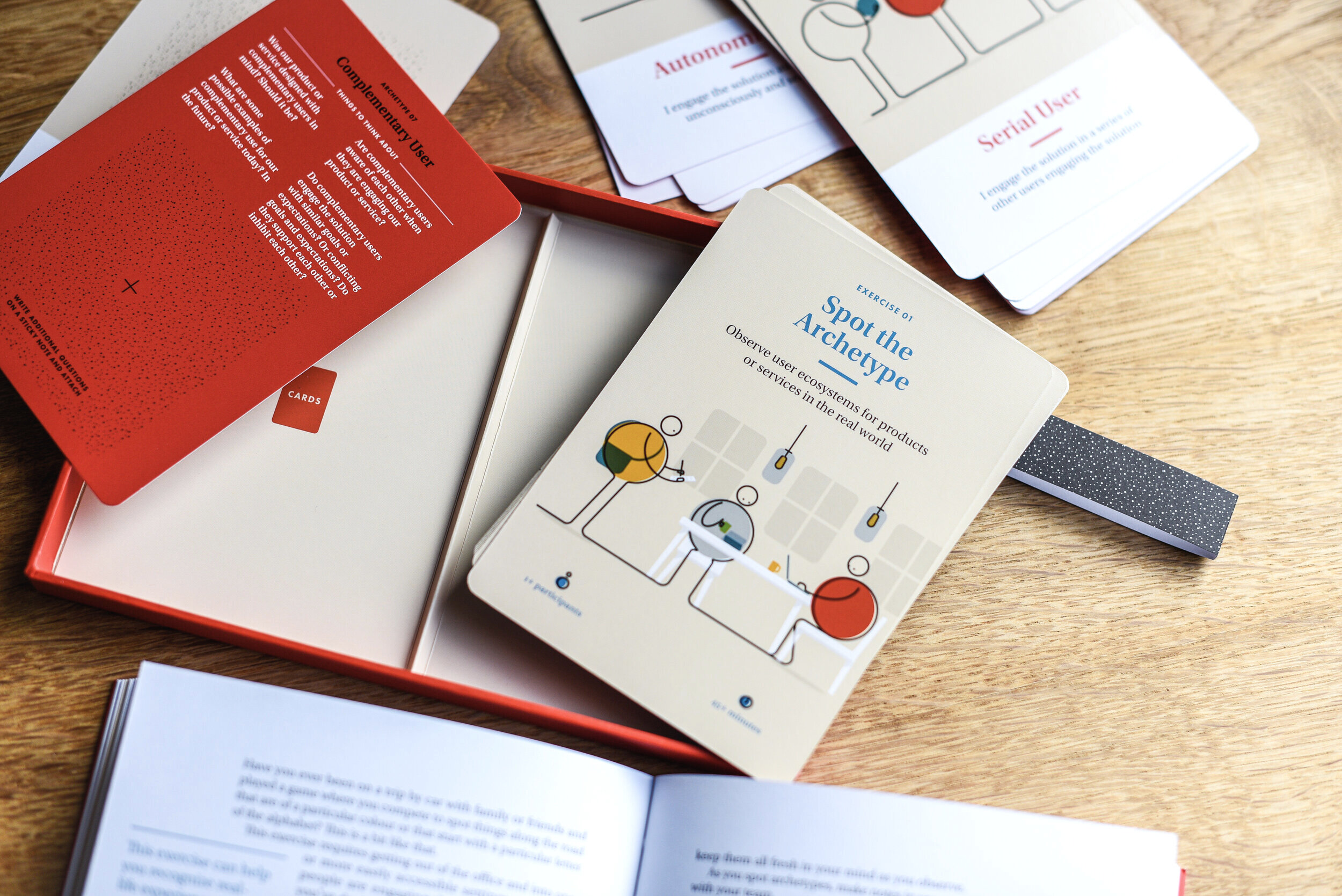If you already have one or more copies of Rethinking Users and you’re wondering how to do the team exercises with distanced colleagues (for example, during a global pandemic), there’s good news—they can easily be done remotely!
Here are some suggestions.
Exercise 1 • Spot the Archetype
Choose distanced viewing points or do your spotting online.
If conditions make it less appropriate to be out in busy social spaces by yourself or with your team, find a distanced space like a porch or window to sit and observe, or look online for webcams, street scenes, documentaries, etc. where people are out engaging products, services, spaces, and other design artifacts. You can even expand your observations to include online sources like customer reviews, discussion boards, or anywhere that people convene to talk about how they relate to your given product or service—their comments can reveal a lot. Take notes or screenshots as you go.
Exercise 2 • Current-State Ecosystem
Exercise 3 • Darlings and Disregardeds
Exercise 5 • Alternate Realities
Have everyone join a video conference with their own set of cards, or use an online whiteboard.
If everyone has a set of User Archetype Cards
In a video call, ask participants to lay out their cards in front of them as the team goes through the exercise. In real time, have participants narrate to the rest of the group what they’re thinking and doing as they add or remove cards, move cards around, write on sticky notes, etc., giving their teammates sufficient time to make the same changes on their own cards. Keeping everyone’s separate layout coordinated will slow the exercise down a bit, but this can actually be a plus—it allows more thinking time for new, creative ideas to emerge.
If not everyone has their own cards
First…why not? Order more copies for the team! If you’re still short, designate one team member to set the cards up in advance in any type of virtual whiteboarding space. Miro, Mural and Figma are a few examples we like. Your virtual cards can be simple text representations of each card—the name of the archetype and the “I engage the solution…” description sentence, as found in Rethinking Users. Sure, you’ll miss the tactile fun of pushing the physical cards around together, but the exercise will work seamlessly. A virtual whiteboard can offer some potential benefits, too—it’s easy to share the output and you can use the special features of the whiteboard to create a more elaborately structured brainstorming space. For example, you could experiment with creating custom game boards for your own, new team exercises!
Exercise 4 • Future-State Role-Play
Exercise 6 • Active Artefacts
Get together on a video conference.
Choose one team member to take charge of managing the User Archetype Cards and assigning an archetype to each of the participants (including themselves). As each team member speaks in turn, they can pass the virtual baton to someone else who hasn't spoken yet. As with the in-person instructions in Rethinking Users, be sure to designate a dedicated notetaker to capture the exercise in real time for all participants to see—for example, in the group chat box or a shared online document.
Pro Tips
Get the team oriented to the platform.
For the smoothest and most energized virtual team collaboration, make sure all participants are familiar with your platform before trying an exercise. Send out links to orientation videos and get in some practice well ahead of time.
Substitute simple web tools.
As a substitute for a virtual whiteboard, you can use something as simple as a shared online document that allows everyone to add text and basic line drawings. Google Docs/Slides or Quip are good places to start.
Get to know the archetypes.
Make sure everyone has a chance to read Rethinking Users and acquaint themselves with the User Archetype Cards in advance.



